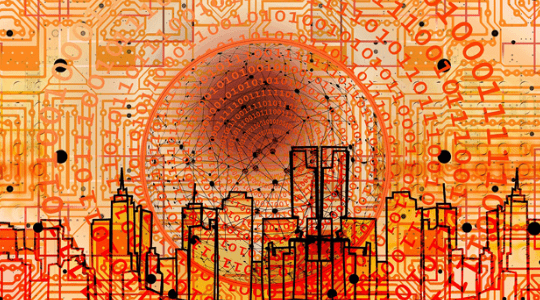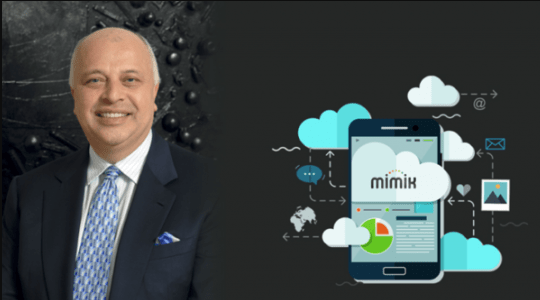The Internet of Things is no longer part of a dystopic future: it has started to impact our daily lives. Our cars, gadgets and tools have become nodes on the internet. We are allowing machines to communicate directly, learn from our behaviour and act on our behalf. We have become the sensory system feeding the machines to process, make decisions and lead us through our daily lives. We have started to pass the torch for decision making for our daily lives to the machines creating the ultimate Artificial Intelligence.
In this new era, the Internet of things is not about dumb sensors sending data to the central cloud but about intelligent machines using a 360 view of our lives and discovering, connecting and communicating dynamically to serve us. This is the era that the Internet of Things is in effect the internet of intelligent nodes. In such a world, not all information processing, communication and decision making can be done through the central cloud.
Gartner forecasts that by 2020, as many as 50 billion devices will be connected; some generating Gbytes per second of data at the edge: simply put, too many devices generating too much data at the edge of the network. Our network and computing infrastructure cannot handle sending everything back to the central cloud to process. We must turn every computing device into a cloud node and enable a much larger cloud using all these nodes. There is no reason to send all the data over the network to a central authority to be processed for a decision. Any computing device regardless of where it resides should be able to participate in processing and making decisions. Central cloud should not be the central authority but simply another “perhaps more powerful” node that is used when absolutely needed.
The only scalable solution to address the explosion of data is edge cloud computing; not to be confused with edge computing. Today “the cloud” is an entity formed with stacks of processing blades networked together and distributed in data centres around the world. However, every capable computing device, such as personal computers, game consoles, smartphones, set-top boxes, or even self-driving cars have significant computing resources. They can become edge cloud servers that process data, discover other edge nodes, communicate, share resources and collaborate all without the need for a central entity and regardless of their different operating systems.
Edge cloud computing also brings other benefits that are specifically vital to the development of Internet of Things: energy efficiency as it would save on energy to send all the information back to data centres. Lower cost for developers to utilise the edge resources instead of paying for third-party cloud resources. Lower total cost of infrastructure and operating costs by leveraging existing unused or rarely used computing resources. Faster response time and lower latency by leveraging nodes that are either attached to the same network or within proximity. And most importantly, the distributed edge cloud helps increase privacy by removing the central trust element.
The opportunity to harvest the computing resources at the edge is enormous. For instance, the collective power of 50 million Sony PlayStation 4s in the market today is roughly four times of Amazon Web Services 27 data centres around the world. Now imagine the power of tens of billions of potential edge node (servers) today and hundreds of billions more tomorrow. If we can harvest all these computing devices, we can create an edge cloud that is millions of times larger than all the central cloud resources today. The time has come to extend the benefits and capabilities of central cloud computing and form a much larger cloud from the distributed edge nodes.
Welcome to the next computing revolution
Now, let’s imagine a few of today’s applications and how they could be built differently with a distributed edge cloud platform.
Enterprise firms jostle for a share of burgeoning IoT space as computing moves to the edge… What does $1 billion buy you as IoT moves computing to the edge?
Ride sharing (Uber/Lyft): Passenger calls for a car. The passenger node finds “driver nodes” within its cluster of proximity. The nodes in the cluster have ratings and other relevant information and can directly exchange information and meet at a designated meeting point. Security can also be managed by decentralised approaches like blockchain.
Hyper-local dating applications: In a distributed edge cloud model, nodes discover each other based on scopes such as proximity, interest, or gender. Each instance of the application is running as a server-less microservice. Through the application, the user sets a series of scopes of interest. Nodes can discover each other based on scopes of interest of each party without sharing their profile with a central trust element. If the scopes match, then users are notified and they can connect. The entire process of discovery, connection, and communication is done without the need for a central trust element making the process, faster, cheaper, and more private.
Cloud storage: I personally have two laptops (a PC and a MacBook), one desktop computer, two iPhones, and an Android tablet. They all contain content (music, photos, videos) that I have collected over time. To share the content across these devices, I must pay for third-party cloud storage such as Dropbox, iCloud, or Google Drive and must trust that these services will not share my content with others and keep it safe and private. With a distributed edge cloud platform, my devices become part of a cluster based on my account and I can access, share and consume the content on any of these devices regardless of the network or operating system. Not only I keep my data private, I can now do content discovery and curation for my friends and even earn rewards like what Shazam does.
Decentralization is the future of the Internet, and edge cloud computing is the ideal solution to accelerate the growth of IoT, bringing massive opportunities to enterprises.


